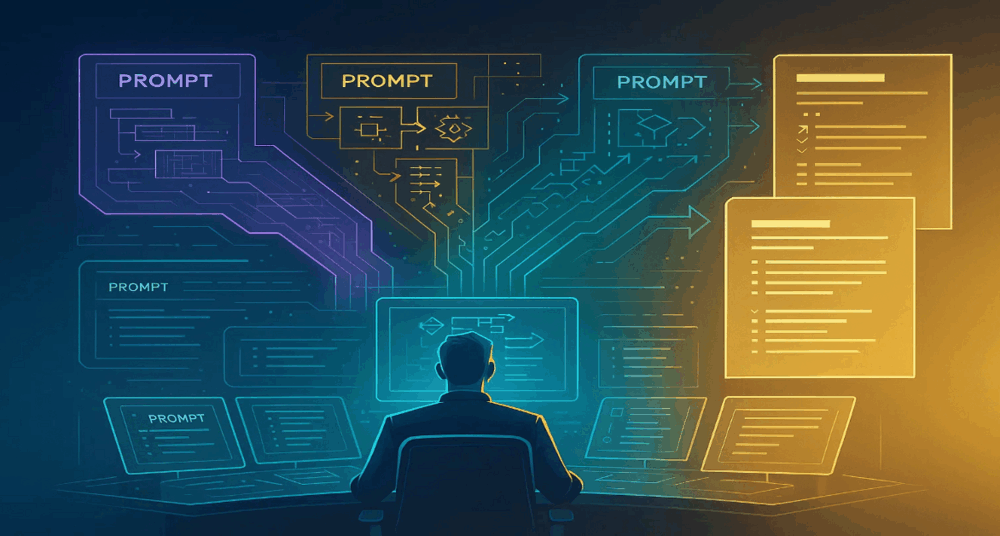“If software is the brain of a product, embedded software is its nervous system constantly sensing, reacting, and orchestrating control over the physical world.”
Embedded software runs silently under the hood of our most critical devices cars, medical systems, industrial machinery, and IoT devices. Unlike desktop or web development, embedded systems are deeply coupled with hardware and operate under stringent constraints in terms of power, memory, and real-time responsiveness.
So what does it take to master embedded development? This article dives deep into the key concepts, tools, and techniques every aspiring embedded software developer must learn illustrated with examples, real-world applications, tables, and code snippets.
Table of Contents
- Introduction to Embedded Systems
- Mastering the C Language (with C++ bonus)
- Understanding Microcontrollers and Architectures
- Memory and Resource Constraints
- Bit Manipulation and Registers
- Interrupts and ISRs
- Device Drivers and HAL
- Real-Time Operating Systems (RTOS)
- Communication Protocols
- Diagnostics and Fault Management
- Power Management
- Embedded Debugging Techniques
- Testing and Validation
- Toolchains and Build Systems
- Secure Boot and Firmware Updates
- Functional Safety (ISO 26262, MISRA)
- Best Practices for Production-Grade Firmware
- Project Ideas to Level Up
- Final Thoughts
1. Introduction to Embedded Systems
An embedded system is a combination of hardware and software designed to perform a specific task. Unlike general-purpose computing systems, embedded systems are purpose-built and often need to operate under real-time, power, and memory constraints.
Examples of embedded systems:
|
Application |
System Name |
Microcontroller Used |
|---|---|---|
|
Automotive ECU |
Engine Control Unit (ECU) |
Infineon AURIX, Renesas RH850 |
|
Consumer Electronics |
Smart Thermostat |
STM32, ESP32 |
|
Industrial Control |
PLC (Programmable Logic Controller) |
TI Sitara, STM32F7 |
|
IoT Devices |
Smart Door Lock |
Nordic nRF52840 |
2. Mastering the C Language (With C++ Bonus)
C is the lingua franca of embedded systems. It provides direct memory access, deterministic execution, and fine-grained control perfect for programming microcontrollers.
Why C?
- Direct access to hardware registers
- Compact binaries
- Deterministic execution (no garbage collection)
- Standardized across platforms
Core Concepts
|
Concept |
Purpose |
Example |
|
|---|---|---|---|
|
Pointers |
Access hardware memory directly |
|
|
|
Bit manipulation |
Control GPIO, ADC, etc. |
`PORTA |
= (1 << 2);` |
|
Volatile keyword |
Prevent compiler from optimizing memory-mapped I/O |
|
|
|
Structs/Unions |
Model hardware registers |
|
Example: Toggle GPIO Pin (Bare-metal C)
#define GPIO_PORTA_BASE 0x40004000
#define GPIO_DIR (*((volatile uint32_t *)(GPIO_PORTA_BASE + 0x400)))
#define GPIO_DATA (*((volatile uint32_t *)(GPIO_PORTA_BASE + 0x3FC)))
void gpio_toggle() {
GPIO_DIR |= (1 << 2); // Set PA2 as output
GPIO_DATA ^= (1 << 2); // Toggle PA2
}
3. Understanding Microcontrollers and Architectures
You need to deeply understand the architecture and capabilities of the microcontrollers you’re working with.
Common Architectures
|
MCU Family |
Architecture |
Used In |
|---|---|---|
|
STM32 |
ARM Cortex-M |
IoT, Consumer Electronics |
|
TI Tiva-C |
ARM Cortex-M4F |
Automotive and Industrial |
|
Infineon AURIX |
TriCore (Safety MCU) |
Automotive (ECUs, ABS, ADAS) |
Key Components
- GPIO: Control digital input/output pins
- ADC/DAC: Convert analog to digital signals and vice versa
- Timers/PWM: Time events and generate pulse-width modulation
- USART/SPI/I2C: Interface with peripherals
- NVIC: Nested Vectored Interrupt Controller
- Clocks & PLLs: Configure system clock speeds
Pro Tip: Always keep the datasheet and reference manual of your MCU at hand. They’re your Bible.
4. Memory and Resource Constraints
Embedded systems often deal with very limited RAM (e.g., 64 KB) and Flash (e.g., 512 KB).
Memory Types
|
Memory |
Characteristics |
Used For |
|---|---|---|
|
Flash |
Non-volatile, slower |
Code, constants |
|
SRAM |
Volatile, fast |
Stack, heap, variables |
|
EEPROM/NVRAM |
Non-volatile |
Calibration, settings |
|
External Flash |
High capacity, slower |
Logs, OTA firmware |
Code Size Optimization Tips
- Use
constandstaticwisely - Avoid dynamic memory allocation
- Use bitfields instead of full-width integers
- Place zero-initialized variables in
.bsssection
5. Bit Manipulation and Registers
Accessing hardware peripherals means reading and writing bits at specific memory addresses.
Bitmask Macros
#define SET_BIT(REG, POS) ((REG) |= (1U << (POS)))
#define CLEAR_BIT(REG, POS) ((REG) &= ~(1U << (POS)))
#define TOGGLE_BIT(REG, POS) ((REG) ^= (1U << (POS)))
#define READ_BIT(REG, POS) (((REG) >> (POS)) & 1U)
Use Case: Configure Timer Register
#define TIMER_CTRL (*(volatile uint32_t*)0x4003000C)
TIMER_CTRL |= (1 << 0); // Enable timer
TIMER_CTRL &= ~(1 << 1); // Set to periodic mode
6. Interrupts and ISRs
Interrupts are the backbone of event-driven programming in embedded systems.
Interrupt Types
|
Type |
Example |
|---|---|
|
External |
Button press, sensor signal |
|
Timer |
Periodic task scheduling |
|
Communication |
UART receive complete |
ISR Example in C
void __attribute__((interrupt)) TIM1_IRQHandler(void) {
if (TIMER_FLAG & (1 << 0)) {
TIMER_FLAG &= ~(1 << 0); // Clear interrupt
toggle_led();
}
}
Best Practices
- Keep ISRs short
- Avoid
printf()in ISRs - Use flags or queues to defer processing
7. Device Drivers and HAL
Writing drivers gives you direct control over hardware components.
Layers
|
Layer |
Description |
|---|---|
|
Register-level |
Direct register access |
|
HAL |
Hardware abstraction layer |
|
Application |
Uses HAL or middleware |
Example: SPI Driver (Simplified)
void spi_send(uint8_t data) {
while (!(SPI_STATUS & TX_READY));
SPI_DATA = data;
}
Many OEMs provide HAL libraries (e.g., STM32 HAL, TI DriverLib) to simplify development, but understanding how it works under the hood is essential.
8. Real-Time Operating Systems (RTOS)
For multitasking or time-sensitive applications, an RTOS like FreeRTOS becomes essential.
Key Concepts
|
Concept |
Description |
|---|---|
|
Task |
Independent thread of execution |
|
Semaphore/Mutex |
Prevent race conditions |
|
Queue |
Inter-task communication |
|
Scheduler |
Determines task priority |
FreeRTOS Example
void vTaskBlink(void *pvParams) {
while(1) {
toggle_led();
vTaskDelay(500 / portTICK_PERIOD_MS);
}
}
xTaskCreate(vTaskBlink, "Blink", 100, NULL, 1, NULL);
vTaskStartScheduler();
9. Communication Protocols
Embedded systems often talk to sensors, other MCUs, or external systems.
Common Protocols
|
Protocol |
Use Case |
|---|---|
|
UART |
Debugging, GPS modules |
|
SPI |
Fast sensor communication |
|
I2C |
EEPROM, low-speed sensors |
|
CAN |
Automotive ECUs |
|
LIN |
Low-cost automotive communication |
CAN Frame Example (Simplified)
typedef struct {
uint32_t id;
uint8_t data[8];
uint8_t length;
} CAN_Frame;
CAN_Frame tx = { .id = 0x123, .data = {0xAA, 0xBB}, .length = 2 };
send_can_frame(tx);
10. Diagnostics and Fault Management
For systems like automotive ECUs, diagnostics are essential.
Concepts
- Diagnostic Trouble Codes (DTCs)
- UDS (ISO 14229)
- OBD-II PID handling
- Fault logging to NVRAM
- Freeze frame data
Real-world experience includes writing diagnostic routines for O2 heaters, FADs, and Tcase systems.
11. Power Management
Power efficiency is vital in IoT and battery-powered devices.
Techniques
- Use sleep/standby modes
- Peripheral gating
- Clock scaling (reduce system frequency)
- Event-driven wakeup
Example to enter deep sleep mode:
SCB->SCR |= SCB_SCR_SLEEPDEEP_Msk;
__WFI(); // Wait For Interrupt
12. Embedded Debugging Techniques
Debugging is harder without a console or GUI.
Tools
|
Tool |
Use Case |
|---|---|
|
Trace32 |
Step-through, trace |
|
JTAG/SWD |
Debug core via pins |
|
CANoe |
CAN bus simulation |
|
Logic Analyzer |
Protocol decoding |
Methods
- Use LED blink patterns
- UART debug logs
- Monitor stack overflows
- Use assert() to catch invalid states
13. Testing and Validation
Testing is critical especially for production-grade systems.
Techniques
- Unit Testing: Ceedling, Unity
- Integration Testing: HIL, SIL
- Static Code Analysis: Polyspace, Cppcheck
- Code Coverage: gcov, Bullseye
Example Test
void test_led_toggle() {
set_led(1);
toggle_led();
assert(get_led_state() == 0);
}
Compilers, linkers, and IDEs glue your source into binary.
Tools
|
Tool |
Purpose |
|---|---|
|
arm-none-eabi-gcc |
Compiler |
|
IAR Embedded Workbench |
IDE |
|
Keil µVision |
IDE |
|
Make, CMake, SCons |
Build systems |
Linker Script Snippet
MEMORY {
FLASH (rx) : ORIGIN = 0x08000000, LENGTH = 512K
RAM (rwx) : ORIGIN = 0x20000000, LENGTH = 64K
}
15. Secure Boot and Firmware Update
Security starts with the bootloader.
Secure Boot Concepts
- Firmware signature verification
- Hashing and integrity checks
- FOTA (Firmware Over-the-Air)
- Encrypted non-volatile memory
16. Functional Safety and Standards
In industries like automotive, you must meet standards.
Common Standards
|
Standard |
Use Case |
|---|---|
|
ISO 26262 |
Automotive safety |
|
IEC 61508 |
Industrial systems |
|
MISRA C |
Safe C programming |
|
AUTOSAR |
Architecture & BSW |
Your work on Stellantis ECUs with AUTOSAR, SMUs, and Lockstep cores gives you valuable exposure here.
17. Best Practices
- Modular code design (driver/app separation)
- Use version control (Git, Bitbucket)
- Document assumptions and requirements
- Avoid magic numbers
- Prefer static allocation over dynamic
18. Project Ideas to Level Up
|
Project |
Skills Practiced |
|---|---|
|
RTOS on TM4C MCU |
Task scheduling, semaphores, UART shell |
|
CAN-to-UART Gateway |
Protocol bridging, buffering |
|
Custom Bootloader |
Vector table, CRC checks, FOTA |
|
Power Profiler for IoT |
ADC sampling, energy logging |
|
Smart Sensor Node (I2C+BLE) |
Sensor integration, low-power sleep |
19. Final Thoughts
Becoming an embedded software engineer is like becoming bilingual in hardware and software. It requires:
- Knowing how to squeeze performance out of minimal resources
- Understanding real-time constraints
- Being able to debug with barely any output
- Writing reliable code that controls the physical world
If you’re coming from an electrical background, lean into your systems knowledge. If you’re a software engineer, dive deeper into registers and real-time behavior.










